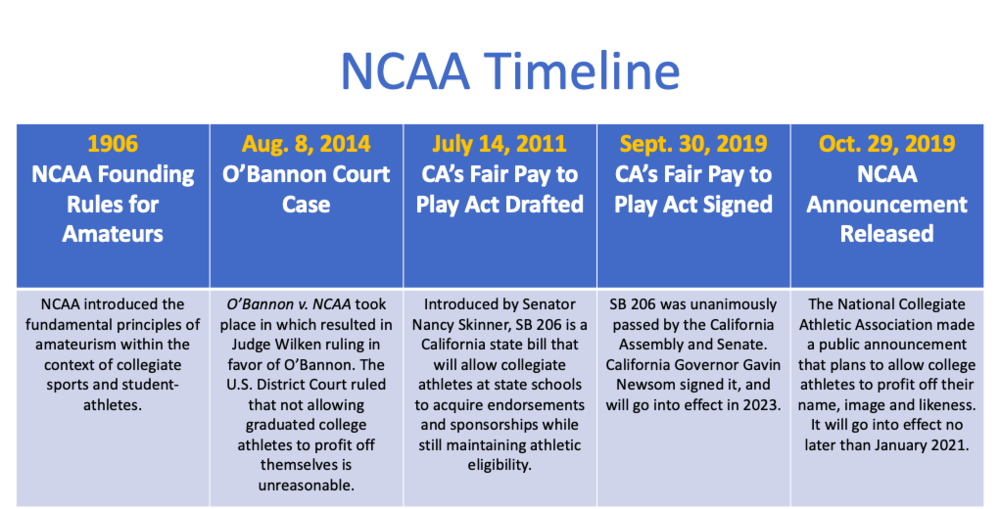By Jake Ziegler
Alabama’s all-American quarterback Tua Tagovailoa is one of the biggest names in college sports not only because of the reputable football program he plays for, but also because of his extraordinary talent on the field. College athletes, such as Tagovailoa, have collectively put on a show for spectators nationwide in their respective sports. According to CBS Sports’ Chip Patterson, the University of Alabama’s football department alone accounted for $108.2 million in revenue and $45.9 million in profit.
Suppose Tagovailoa has an incredible season and contributes to winning a national championship title for the school. As a result, he wants to make money off selling his jersey since he’s a champion that served one of the most important positions on a football team for a successful school. At the same time, many advertisers, such as Gatorade, want to use Tagovailoa’s image and likeness in its next commercial about a new sports drink product. All of these offers scream dollar signs in the back of Tagovailoa’s head.
Despite that, Tagovailoa couldn’t take advantage of any of these money-making opportunities without violating any National Collegiate Athletic Association policy for student-athletes. No matter the team, division, program, sport or accomplishments attached to their name, no college athlete was permitted to make any sort of profit through participating in college sports. But, by the same token, several entities earn millions of dollars off this industry, including the universities, coaches and the NCAA. The student-athletes themselves have never received any portion of that revenue, and they still don’t. However, all college athletes, especially ones like Tagovailoa, have been provided a potential game-changer by the NCAA.
The NCAA’s Board of Governors voted unanimously to permit college athletes to profit off their name, image and likeness on Oct. 29. This announcement arrives less than one month after the state of California passed SB 206, signed into law by governor Gavin Newsom, which contained similar terms and conditions for their college athletes.

According to the NCAA’s press release, Ohio State University President and Chair of Board Michael Drake said the NCAA instructed all three divisions to begin making revisions with this new change into account. In addition, the NCAA expects these divisions to have their new rules come into effect immediately, but no later than January 2021.
“We must embrace change to provide the best possible experience for college athletes,” Drake said in the release.
Comprehensive recommendations for this policy change influenced the NCAA Board of Governors Federal and State Legislation Working Group. This group is comprised of presidents, commissioners, athletics directors, administrators and student-athletes.
The NCAA, however, is mandating that this policy change must be enforced in a “manner consistent with the collegiate model.” The governing body also reminds the college sports world of some principles and guidelines that student-athletes still must adhere to. These include: “student-athletes are not considered university employees, they cannot receive compensation for participating in athletics and that there’s a clear distinction between collegiate and professional opportunities.”
NCAA President Mark Emmert justifies this decision while emphasizing the fact that its fundamental belief in amateurism will still be implemented in college sports.
“As a national governing body, the NCAA is uniquely positioned to modify its rules to ensure fairness and a level playing field for student-athletes,” Emmert said in the NCAA’s press release. “The board’s action today creates a path to enhance opportunities for student-athletes while ensuring they compete against students and not professionals.”
With this in mind, if this policy was in effect during that hypothetical Alabama championship run, Tagovailoa would likely be able to pocket money from selling his jersey to consumers and engaging in commercial offers from advertisers wanting to use his name, image and likeness.
This issue of college athletes profiting from their name, image and likeness first came to light in the U.S. justice system during the antitrust class action lawsuit called O’Bannon v. NCAA. Former UCLA basketball player Ed O’Bannon filed this lawsuit on behalf of all Division I men’s basketball and football programs against the NCAA, challenging the use of images of its former student-athletes for commercial purposes. O’Bannon’s primary argument is that upon graduation, student-athletes should be entitled to financial compensation for the NCAA’s commercial use of their image. This is because, if not, it would violate the terms and conditions of the Sherman Antitrust Act of 1890. However, the NCAA’s response said that amateurism and its principles are upheld and maintained in these cases.
This case came about after O’Bannon saw his likeness from the 1995 UCLA championship team used in the Electronic Arts Sports video game titled NCAA Basketball 09 without his permission. The game featured an unnamed UCLA player that matched several of O’Bannon’s playing characteristics, including his power forward position, height, weight, bald head, skin tone, No. 31 jersey and left-handed shot.
District Judge Claudia Wilken ruled in favor of O’Bannon, holding that the NCAA’s policies and rules “operate as an unreasonable restraint of trade” and in fact violates antitrust law. She ordered that schools should be allowed to offer full cost-of-attendance scholarships to athletes, covering cost-of-living expenses that were not currently part of NCAA scholarships. Wilken also ruled that college be permitted to place as much as $5,000 into a trust for each athlete per year of eligibility. The NCAA subsequently appealed the ruling, arguing that Wilken did not properly consider NCAA v. Board of Regents of the University of Oklahoma. In that case, the NCAA was denied control of college football television rights, but the court also stated: “To preserve the character and quality of the ‘product,’ athletes must not be paid.”
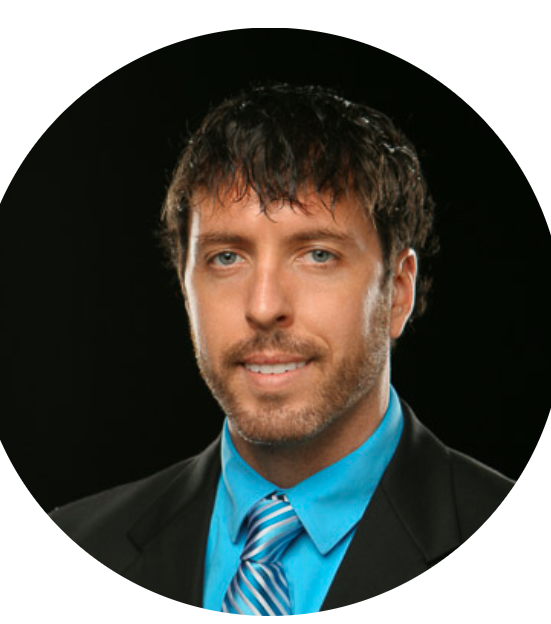
Professor at Bob Jones University Tony Miller thinks this case is going to be the foundation of what created all this controversy.
“Even though (O’Bannon) wasn’t the first to have this happen to him, this will be the case that California legislation have an influence on how we view this issue now,” Miller said.
The U.S. Sports Academy Doctoral candidate also played EA Sports video games in his childhood, and like O’Bannon, would easily identify all the players.
“I would know who was each player based on their height and weight even though none of the players’ jerseys didn’t have name plates on the back,” Miller said. “I would upload players’ last names from memory cards onto the game and insert them on the players’ jerseys.”
Miller also doesn’t think the NCAA had any good intentions behind making this announcement, and that the timing of such was inevitable.
“The NCAA wasn’t going to do anything unless they felt pressured by other forces,” Miller said. “They would probably continue with the traditional amateurism model if the California law didn’t come to light.”
From the athlete side of this, senior forward from Quinnipiac men’s soccer Eamon Whelan says he plays a sport that’s not a big money-maker, though he likes the change.
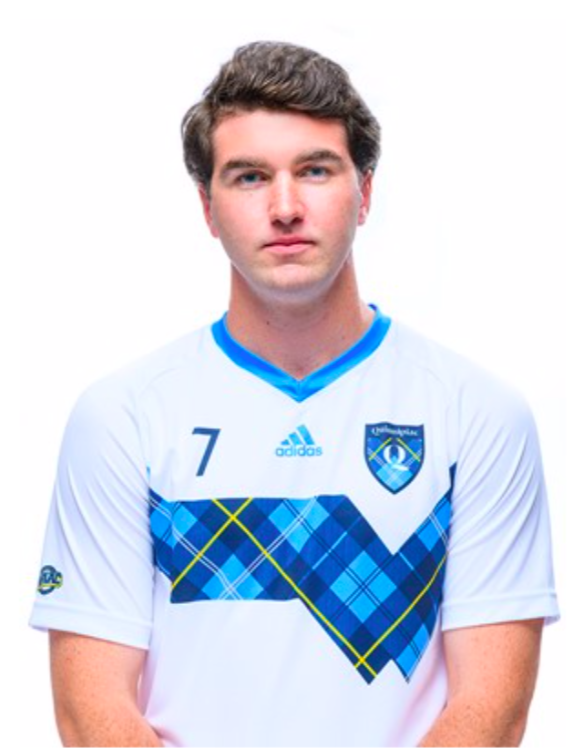
“Coaches and colleges are making a lot of money and I think the athletes deserve a lot of it because they’re a huge reason for that,” Whelan said.
Senior midfielder from Quinnipiac women’s lacrosse Victoria Bobinski concurs with Whelan, as she believes lacrosse doesn’t have a lot of money either. However, she also thinks there needs to be a lot of rules behind the policy.
“There should be a percentage limit of what athletes can make because there can be a huge gap between a top-tier university versus a small school that gets no recognition,” Bobinski said. “I think there needs to be a level playing field, especially when it comes to the differences between men’s and women’s sports.”
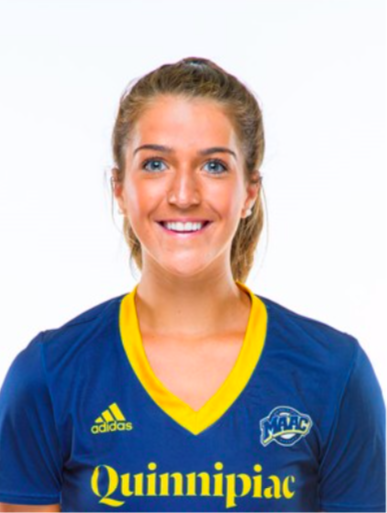
From the coaching standpoint, University of Connecticut women’s ice hockey head coach Chris Mackenzie is in the neutral zone when it comes to his stance on the policy.
“I’m not for it, but I’m not against it, either,” Mackenzie said. I’m very interested in seeing where the NCAA goes with it because this topic has certainly warranted attention.”
Mackenzie pointed out that UConn likely has 10 or less athletes that will be affected by this policy because he believes only basketball and football stars at top schools will take advantage of this rule. Whelan and Bobinski voiced similar thoughts, as well.

However, Mackenzie has formulated a unique, creative way for women’s hockey players to make money off their name, image and likeness off the ice.
“I think student-athletes going back home and creating a hockey school for themselves is something they can profit from,” Mackenzie said. “You can train, have a camp and make money all at the same time.”
On the other hand, Quinnipiac women’s soccer head coach Dave Clarke says his viewpoint is “three-fold” coming from a former college athlete, coach and outsider. However, he thinks the NCAA’s mission might become jeopardized.
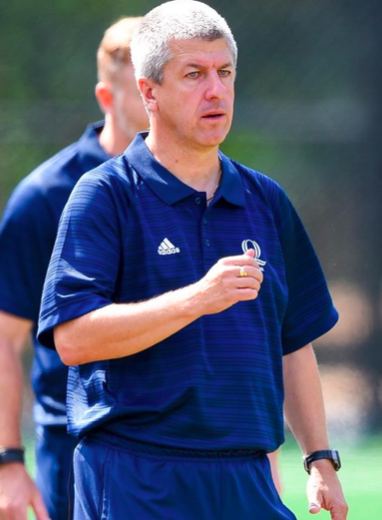
“I understand why it’s in place, but I also think that we have to maintain the integrity of Division I athletics and having players going to school to prioritize their education,” Clarke said.
Quinnipiac sports economics professor Donn Johnson has been in favor of this change for a long time.
“The amateurism model has been there for over 100 years, and I think that’s starting to change,” Johnson said.
Johnson supports letting the economic factors play their role, even in college sports.
“I think the market forces and politicians are finally telling the NCAA to address this,” Johnson said. “At this point, they knew they were stuck.”

He also thinks the NCAA is corrupt and unethical all along for not allowing college athletes to profit off themselves.
“From a moral standpoint, you’re taking revenue they generate and keeping it for yourself and others for your own salaries,” Johnson said. “They should get paid for the value they create.”
Associate professor of sports management at the Ohio State University David Ridpath notes the hypocrisy the NCAA has showed in the sense that it gives off the impression that “the world would end” if college athletes could profit off their own brand. And now, they’re “singing a different tune.”
“The NCAA would have never been progressive enough or unselfish enough to make this change on their own,” Ridpath said.
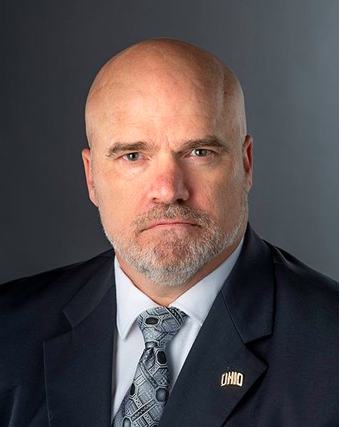
Ridpath believes the NCAA uses terms like amateurism and collegiate model to accomplish a certain agenda.
“The current model cannot sustain and things like amateurism and collegiate model do not exist and are terms of art used to restrict basic rights,” Ridpath said.
Ridpath also mentioned the NCAA has a hidden agenda they’re pursuing based on three falsely promoted myths.
“The NCAA is based on academic integrity, amateurism and competitive equity,” Ridpath said. “Overall, none of these exist and are used to perpetuate public relations so others can get rich.”
Despite these NCAA criticisms, Ridpath says its core value should reflect Pulitzer Prize-winning author Taylor Branch’s famous line: “You first deal with the athletes rights—everything else is an adjustment.”
That said, he and many others like where the NCAA is headed.
“It’s a big, needed step, but there are many questions still to be answered,” Ridpath said.
And the public is expecting those questions to be answered on or before January 2021. Topics that should be answered by the NCAA include any cap limit, what’s permissible to profit from, its effect on the athlete recruiting process, the athletic contracts’ conditions and any major differences between sport, sex and division level. At this point, coaches, athletes, fans, administrators and the rest of the college sports world eagerly await to see what transpires from here.
